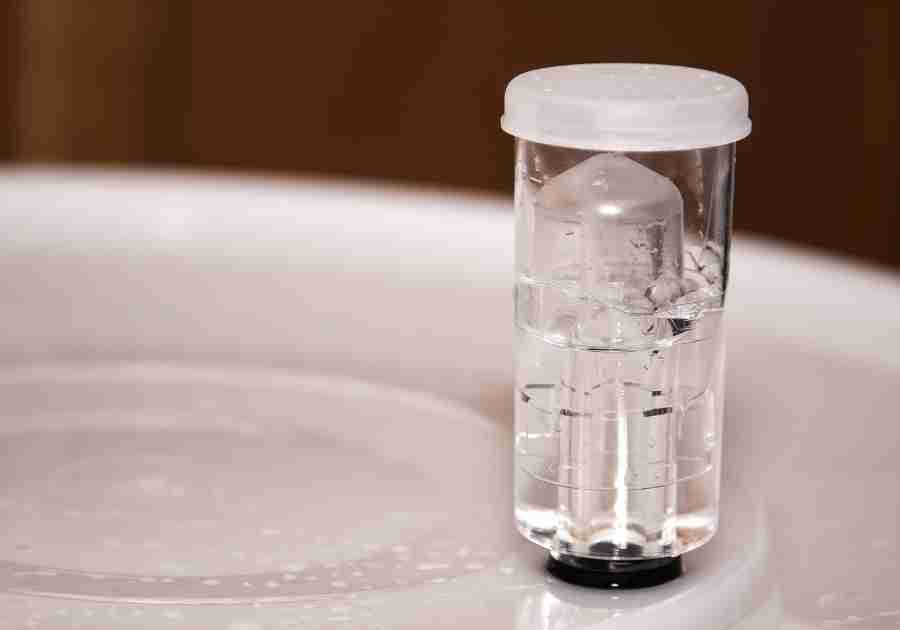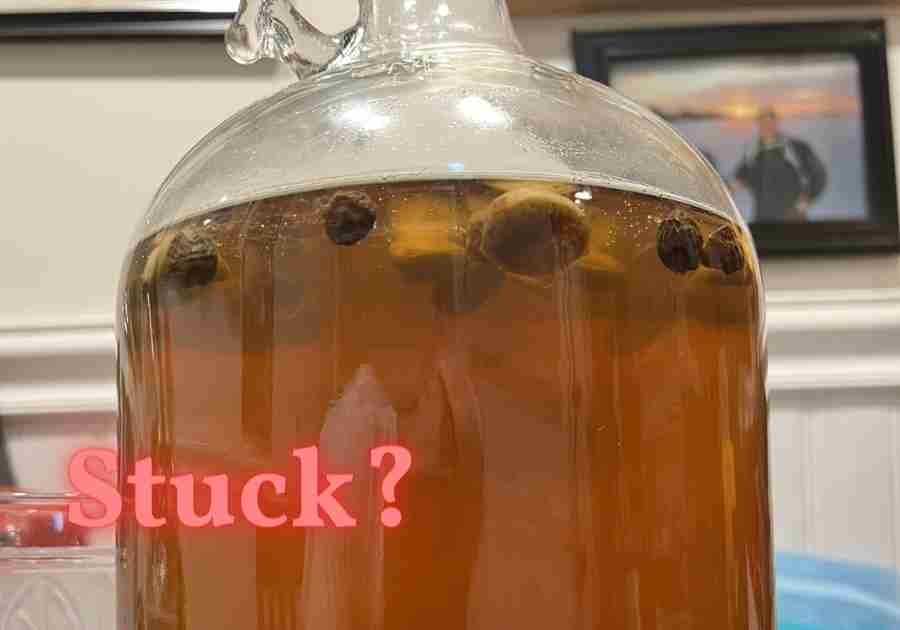So you’ve done a great job with getting all your ingredients together. You’ve mixed everything in your fermentation bucket, you’ve pitched the yeast, slapped the top on the bucket and attached an airlock.
Fantastic work friend! After a little bit, maybe a day or two, you start noticing your airlock bubbling and you start to wonder exactly how long it should be doing that.
Mead should bubble on your primary fermenter for about 2-4 weeks depending on if you’re using a staggered nutrient schedule or not. Usually this will start with a very fast and consistent bubbling which over the next couple weeks will slow down as the sugars are being eaten off.
While you’ll likely see a bunch of bubbling going on, there’s a number of factors that could contribute to the bubbling either slowing down considerably, or stopping altogether. While a sudden change like this might be a cause for concern, understand that there will be some slight slowing down of your bubbling. It’s important to stay calm and go over your reasons for what might be happening in your mead.
Is bubbling a reliable measure to go by?
While bubbling itself isn’t an exact measurement to go by when considering what is happening to your mead, it is a clear sign that something is happening. If you pitch your yeast and a few days go by and there isn’t any bubbling at all, it’s indicative that fermentation might not be taking place.
People will construe different things to different aspects of bubbling. If it’s bubbling fast it means one thing while if it’s going super slow could mean another thing. Ultimately you really can’t tell what is going on until you crack the lid and measure what the gravity is of your must.
So, while I wouldn’t make any determinations based on how long or how fervently my airlock was bubbling, I would look further into it if I thought something was wrong because it wasn’t bubbling yet.
If your mead stops bubbling, you should check three things before moving onto stuck fermentation issues. First, check the seal of the fermenter if you’re using a plastic bucket. I’m not sure what it is, but those buckets have really tight seals to the point of insanity. The lids are hard to get off and are sometimes hard to snap on. Sometimes they aren’t on all the way and let air out through.
Second, consider whether you have enough nutrients in your must to allow consistent fermentation. If you’re bubbling for a few days and suddenly it dies off, it might just mean that the simple sugars were eaten through and now the yeast has moved onto the more complex sugars in honey that, sans nutrients, will require the yeast to make enzymes to break through. This will obviously require more time and will slow down bubbling.
Third, check to see if you’re using fruit in your primary fermentation. You may have to push the cap down in order to free up the gas inside. I remember when I first started making meads we made a grapefruit mead that had a ton of pulp and grapefruit parts in it. Turns out, a very solid cap comprised of the solid materials of the fruit was building at the top of the fermenter. As advised, the solution for us was to open it up and push the fruit down into the liquid in order to break it up.
What to do about stuck fermentation?
You’ve already ruled out that it’s not fermenting because you took a gravity reading and it hasn’t moved, what now? The first thing to do is go down a checklist and rule out anything that may have caused a stuck fermentation to begin with.
Here’s a comprehensive checklist for common reasons that your fermentation could be stuck. It’s important to try and single out a reason for why your airlock isn’t bubbling. If it really is a stuck fermentation, there’s some common remedies.
- Not pitching enough yeast – If you didn’t use enough yeast in the beginning it may stall due to a lack of raw materials needed in order to turn the amount of sugar into alcohol. In this situation you could add yeast.
- Lack of nutrition – Sometimes your fermentation can stall if you aren’t using nutrition as part of your recipe. Simply add an adequate amount of nutrients.
- Must is too hot when yeast was pitched – if you are boiling your must you have to let it cool to the appropriate temperature before adding yeast. The solution here is to add yeast after the temperature is cool enough.
- Must too hot or cold in fermenter – if your fermenter is being stored in an area outside the temperature range of your yeast it could cause the yeast to become dormant. Either bring up or down the temperature by moving it to an appropriate area and stir your must in order to revive the yeast.
- Gravity is too high – if you’re using a yeast that has a certain abv threshold it could cause the yeast to stall if you go outside of that threshold. Not much you can do here.
The two biggest problems that I ran into with a stuck fermentation was something wrong with the yeast itself, or not having enough nutrients in the must. The easy fix to this is to either add yeast or add nutrients.
One time I was having a stuck fermentation with a possible infection and I went to my local homebrew shop for advice. He said to put in some EC-1118 yeast because it will outcompete every other microbe and ferment everything dry. I put it in and it worked like a charm. However, if you aren’t looking to make a high abv dry mead you should try a different yeast strain for this method.
If you think it’s an issue of not having enough nutrients either because you didn’t put any in at all, or you didn’t put enough in, just pop the top and add in enough nutrients according to how much mead you are making.
Conclusion
Bubbling on your fermentation is one of the key indicators that something is going on inside your fermentation vessel. However, it’s not the be all end all to determine what’s what. If everything is going correctly, you should have a nice bubbling experience going on for a few weeks.


